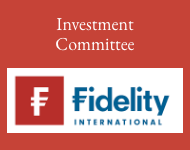Fund groups favour inclusion of past performance disclosure on packaged retail and insurance-based investment products key information documents (PRIIPs KIDs), according to research from FE fundinfo.
UCITS management companies have nine months before they must fully comply with the PRIIPs Regulations. The report published by FE fundinfo reveals that more than 75% of fund groups would prefer past performance to be shown on the PRIIPs KID in some form, with 41% saying they would prefer it to replace the future performance scenarios entirely.
Under the regulations, the past performance of a fund is not included on a PRIIPs KID as it is on UCITS KIIDs, replaced instead with a range of future performance scenarios.
These future performance scenarios have drawn criticism from fund groups and campaigning organisations for being hard to understand and potentially misleading. According to the research, just 5% of fund groups support the inclusion of future scenarios on their own.
The report, ‘Preparing for PRIIPs’, also reveals minimal support for a workaround solution, currently being proposed. This would see an investment product’s past performance presented as a separate standalone document, with a link to that from the PRIIPs KID. Only 11% of fund groups revealed they supported this option.
Commenting on the findings, Mikkel Bates, regulations manager at FE fundinfo, said that the fact the PRIIPs KID are due to replace UCITS KIIDs “is only part of the issue”.
“There is a growing strength of feeling, spearheaded by Better Finance, the European investors’ lobby group, who argue that future performance scenarios are difficult for investors to grasp. Given they are constructed to include different time frames and economic conditions, it is not surprising, especially in the context of the market volatility in the past year.”
The research also found that many fund groups remain unprepared to meet the 31 December 2021 deadline. One in eight fund groups said they will not meet the deadline, with 38% yet to begin PRIIPs KID production. Among the barriers preventing fund groups meeting this deadline were disagreements at policy level (cited by 25% of fund groups) and problems relating to producing and gathering the necessary data required (cited by 23%).



































